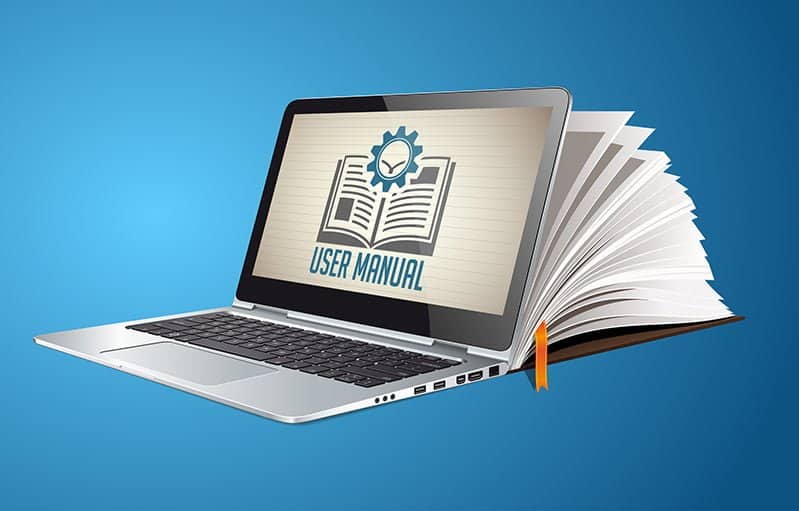The Evolution of Online Manuals: A Historical Perspective
 0
0
Posted: Mon February 03 12:43 AM PST
Member: Rene Thomas
Tags: online manuals
In today's fast-paced digital world, the way consumers access information about their products has transformed dramatically. Online manuals have emerged as vital resources, providing users with immediate access to crucial information. This article explores the evolution of online manuals, highlighting their significance and the technological advancements that have shaped their development over the years.
The Early Days of User Manuals
In the early days of consumer electronics, product manuals were predominantly physical documents. Companies like Toshiba produced thick, printed manuals packaged with their products, containing essential information about usage, maintenance, and troubleshooting. These manuals were often cumbersome and not user-friendly, as they required users to sift through pages of text to find specific information.
The Weil-McLain manual for heating systems serves as an early example of such a user guide. Homeowners and technicians relied heavily on these printed resources to install and maintain boilers and water heaters. The manual provided diagrams, safety warnings, and troubleshooting tips. However, finding the right information could be time-consuming, forcing users to rely on their memory or search for the manual in their files.
The Transition to Digital

With the advent of personal computers in the 1980s and widespread internet adoption in the 1990s, the way information was disseminated began to change. Manufacturers started to recognize the potential of digital formats for user manuals. Early online manuals were often simple PDF documents, offering little interactivity but providing an advantage over printed publications: convenience.
Toshiba, adapting to technological trends, began to digitize their manuals, allowing users to download them from their website. This transition marked a significant step towards making information more accessible and reducing the need for physical storage. Similarly, the Weil-McLain manual, which had complicated diagrams and detailed procedures, became accessible online, making it easier for homeowners to find relevant information quickly.
The Rise of Searchable Manuals
As internet technology progressed, so did the design of online manuals. The early 2000s saw the emergence of more sophisticated web technologies that enabled searchable manuals. Search functions allowed users to quickly locate specific information without having to scroll through entire documents. This innovation represented a significant leap forward, improving user experience.
Brinkmann, a company known for outdoor cooking equipment, embraced this trend by creating an online manual for their grills that was easy to navigate. Users could type in keywords like “assembly” or “safety tips” to find precisely what they needed. This increased efficiency in locating information significantly improved customer satisfaction and reduced the need for customer support hotline inquiries.
Interactive Features and Multimedia Integration
As broadband internet became more common in the late 2000s, the potential for enhancing online manuals grew tremendously. Companies began integrating multimedia elements like video tutorials and interactive diagrams. These features catered to a generation of consumers increasingly accustomed to dynamic content.
For instance, the contemporary versions of the Toshiba manual not only provide text instructions but also include instructional videos that demonstrate how to set up devices. Such multimedia guides engage users and cater to different learning preferences, transforming how manuals assist consumers in using products.
Similarly, the Weil-McLain manual updated its online presence to include animated setup guides, ensuring that users could visually grasp complex installation procedures. Brand loyalty increased as customers found these interactive resources helpful, enabling them to troubleshoot problems independently.
![]()
Mobile Accessibility and Future Trends
Today, we live in a mobile-driven world where consumers expect information at their fingertips. Mobile accessibility has become a crucial component of online manuals. Companies are now designing responsive websites and apps that allow users to access manuals from smartphones and tablets.
The Brinkmann manual for example, is available via a mobile app, allowing users to quickly consult grilling instructions while outdoors. This convenience aligns with modern lifestyles and highlights the importance of adapting manuals to users' habits.
Looking toward the future, the integration of artificial intelligence and augmented reality could revolutionize online manuals even further. Imagine using AR to overlay instructions directly on a product, providing real-time guidance as users navigate complex tasks. This level of innovation aims to create a seamless relationship between products and their users, making manual use almost instinctive.
Conclusion
The evolution of online manuals from printed documents to interactive digital resources reflects broader technological advancements and changing consumer expectations. Companies like Toshiba, Weil-McLain, and Brinkmann have embraced these changes, continually improving the user experience and fostering greater customer satisfaction. As technology continues to evolve, online manuals are set to become even more intelligent and user-friendly, ensuring that consumers can access the information they need when they need it.
In this digital age, it is evident that the evolution of online manuals is more than just a trend; it is a necessary adaptation to meet the demands of a tech-savvy generation. As we look to the future, the potential for innovation in this space is limitless, paving the way for manuals that truly enhance the user experience.
Comments
Please login above to comment.
